So what’s the point of belonging to something that includes everyone with a bellybutton?
Every summer several thousand folks converge in a National Forest somewhere in the United States to answer that question for themselves. At the end of an hour’s hike into the woods, they find themselves in the midst of a working cooperative community— a diverse and colorful crowd encamped in buses, tipis, hammocks and tents, with dozens of open-air kitchens where anyone can volunteer and everyone eats for free. At dawn on the 4th of July the camp falls silent, and thousands join hands in an open meadow to pray for world peace. On the 7th, a smaller circle sits down to talk, and to listen, until a consensus emerges for the approximate whereabouts of next year’s encampment. A dedicated crew stays for a couple more weeks to recycle the trash and re-seed the trails, and like its namesake the Rainbow Family Gathering is gone.
Or is it?
August 1994: the 25th anniversary of Woodstock. Through all the solemn professional reportage and smug sensationalism in the media coverage of “Woodstock II,” you could sense an undertone of something else: the astonishment of a pack of cynical middle-aged reporters that the magic of Woodstock I was still alive and well. No matter how they tried to contain it, in story after story and photo after photo the enchantment kept leaking through.
What the press didn’t know is that experienced Rainbow gatherers had a lot to do with keeping people healthy, fed, sanitary, and safe at both Woodstock II sites. The Bethel festival, once it was officially canceled, quickly turned into a medium-sized Rainbow gathering with a stage. Even the Saugerties festival, for all its commercialism, would have been a logistical disaster without the practical experience of over two decades of Rainbow gatherings.
That same month on the other end of the continent, when the extremely well-publicized and poorly-organized Global Drum Celebration at the Grand Canyon finally took place, it happened on a site where a large Rainbow contingent had set up camp after withdrawing from the initial confusion and chaos. A similar thing happened when the Great Peace March of 1986 dissolved in its first weeks, in the aftermath of Hurricane Katrina in 2005, in many of the Occupy encampments, and on any number of lesser-known occasions: Rainbow expertise at consensus decision-making, creative problem-solving, passing the hat, living off the grid, making friends in local communities, spontaneous cooperation and volunteer labor stepped in and saved the day. In a word: magic.
You see, it wasn’t Woodstock that created the magic in the first place; it was the magic that created Woodstock. The worldwide Rainbow Family of Living Light, though not directly inspired by Woodstock, has expanded the legacy of the legendary music festival into a vision of all-inclusive community and has carried that vision into the 21st century more or less intact.
More accurately, the vision has carried us; a leaderless non-organization like Rainbow could only have manifested 53 annual July 4th Gatherings and countless smaller regional and international gatherings by learning to channel the magic, as a lightning rod attracts lightning and safely channels it to the ground.
At the 1994 Wyoming Gathering, for instance, 2,000 people formed a bucket brigade and put out a forest fire on the 3rd of July; on July 4th, they prayed for peace; on July 5th, it snowed. During the 1987 North Carolina Gathering, a lengthy drought in the Southern Applachians auspiciously came to an end. The following year in Texas it happened again, and the mayor of Zavalla, Texas, personally came out to the Gathering to express his thanks. It happened a third time at the 1998 Arizona Gathering, which began during a Forest Service Fire Ban. This time, when it rained, it rained nowhere in Arizona except the Gathering site. And each time with the rain came a rainbow.
No, “magic” is not a metaphor. Why aren’t the Rainbow Gatherings as widely known as the original Woodstock, or the Rainbow offshoot known as Burning Man? Maybe the magic has been protecting us. Oddly enough, we consistently get more coverage in the mainstream media than the alternative press. Of course the usual media spin is, Look at the picturesque, eccentric hippies! Haven’t they heard the fad is over? But that hackneyed image of leftover acid freaks and wannabe Indians serendipitously filters out everyone except the few who are attuned to the magic, and the even fewer who feel called to travel across the country and hike into the woods to see for themselves.
In the months and weeks before a Gathering, individual gathering enthusiasts do a lot of hard work entirely on their own initiative: studying topo maps and scouting a site; tapping a spring, running water lines, and installing filtration systems; building kitchens, bridges, ovens, a theater, a playground, even a library in the woods; holding an informational meeting in the nearest town; setting up infrastructure for parking, supply, sanitation, and more. But they do all this simply to create a space for folks to gather. The magic does the rest.
Of course the Rainbow Family has no monopoly on magic. Any gathering of the human tribe is magical, if you take away the profit and power motives (poof! nine-tenths of Western Civilization disappears!)— because life itself is fundamentally made of magic, gathering is something we two-leggeds just naturally do, and if nothing gets in the way, then presto! Life happens, and it’s magic.
It’s the same magic that traditional cultures all over the world recognize and respect and have learned to channel in their ceremonial lives. The Rainbow Family, still rearing its third generation, has a long way to go. But over five decades, as we have practiced channeling and focusing the living magic sometimes called Spirit, we have gradually outgrown the ’60s-centric label counterculture and become a viable culture in our own right. Or perhaps it’s more accurate to call the Gathering an annual reunion of the broader countercultural movement that has been growing and deepening and maturing since the ’60s to take its rightful place as a global alternative culture.
“Spirit” is a term that makes some people uncomfortable. But no one objects when we use the more inclusive term “love.” Love is the essence of every religion, but it pre-dates even the earliest human artifacts. Love is biology— our birthright as mammals, the thread that has connected generations of mothers and babies through the eons of evolution. Tribal societies are held together by love not just for their human families but for the wider community of life and land that nurtures them. Love is the heart of the intentional communities movement, prosaically but no less mysteriously known as community glue. Modern civilized folk have tragically neglected their innate ties to nature, but our love for our children is the only thing that can save us now as we hurtle headlong toward planetary catastrophe.
The Rainbow Gathering consists of countless acts of love disguised as sweaty labor, hot food, holding hands in a circle, singing and drumming around a campfire, herb walks, consensus process, medical care, sorting trash, freely offered expertise in yoga, permaculture, Sufi dancing, Tai Chi, massage, and other forms of healing . . . a chaotic chorus of what we call “heartsongs.” It’s the age-old dance of individuality in community, the deep fulfillment of playing a part in something greater than ourselves, whether tribe, watershed, or all of Creation. It’s the bliss of service, giving and sharing, teaching and learning— love in all its many forms.
When “peaceable assembly” is against the law. Magic . . . Spirit . . . Love. No wonder the authorities are afraid of us! Why else would they declare the Gathering a “state of emergency” and spend millions on illegal roadblocks, armed patrols, and and disinformation campaigns in the media? They can’t seem to comprehend that free individuals can assemble peaceably and cooperatively without a hierarchical power structure like theirs. They too serve something greater than themselves, and in theory, it’s the U.S. Constitution. It seems to escape them that harassing a peaceful gathering violates the very definition of freedom enshrined in that document’s First Amendment— freedom of assembly, association, worship, and expression.
What confuses them most is this notion of “Rainbow Family.” Within their legalistic frame of reference, anything with a proper-noun name must be a legal entity that falls under one subsection or another of the regulatory universe. What they don’t get is that “Family” denotes not an organization but an idea. The astounding logistical feat that is a Gathering is motivated not by loyalty to a particular subset of humanity, but by an ethic of service to the entire human family, pragmatically defined as “everyone who shows up.” No one is excluded except those who exclude themselves by showing up under orders and on the clock, wearing weapons, defying the fundamental tenets of Rainbow: peaceful coexistence and the gift economy.
To outlaw this alarming outbreak of freedom, the government bureaucrats must contort the rule of law into a pretzel of paradox. Individuals who break the law are duly ticketed or arrested, but the act of gathering itself is perfectly legal until the 75th person arrives. At that point a special Forest Service regulation kicks in, created just for us. To make the Gathering legal, one gatherer has to sign a permit on behalf of the rest of us— clearly fraudulent unless the rest of us have given our consent. To sign or not to sign: either way we are breaking the law. Ever since a civil court ruling in New Mexico pointed that out, the permit regulation has taken a back seat to other modes of official harassment. But it has sent a dozen gatherers to prison over the years, and it’s still on the books.
Meanwhile, the U.S. Forest Rangers whose job is to safeguard the forest find us perfectly willing to work with them to protect endangered species and keep the Gathering healthy and safe. We consistently get high marks for post-gathering cleanup and site restoration from District Rangers wherever we gather.
Many fine initiatives of the Baby Boom generation have reached a critical impasse. Where, the aging founders are wondering, are the young people to carry it on? Oddly enough, at the Rainbow Gathering this is not an issue. Fifty years on, a host of energetic, enthusiastic young folk are flooding in to shoulder the heavy lifting— including literal “sherpa duty,” helping their doddering elders down the trail. Instead of “Turn on, tune in, and drop out,” it’s “Show up, plug in, and follow through.” Many of them are nomads, traveling together in retrofitted school-buses from gathering to gathering, forever homeless but everywhere at home. These are the kids who are smart enough to see through the neon glitter of “Babylon,” the so-called “real world”: a so-called culture thats merely a predatory economy in disguise, offering graduate degrees and careers, but no future. They instinctively seek out Rainbow for the same reason people join an intentional community, and many will indeed graduate to year-round communal living.
Manifesting world peace, “each in our own way.” Not that the Gathering is a trouble-free backwoods utopia. Ego trippers, substance abusers, predators, thieves, psychiatric patients off their meds— true to its name, the Rainbow Family is a microcosm of humanity. Working “security” is a key function handled by some of the more dedicated volunteers, including many combat veterans who see the Gathering as an antidote to their experience of war. In fact, the original Rainbow vision sprang from a synergistic convergence of ’60s peaceniks and the Vietnam vets with their military training in outdoor survival.
The truth is, a lot of us are still at the kindergarten stage of our spiritual path, and more will always be arriving for their first Gathering. But the purpose of a culture, unlike a counterculture, is to provide a common framework for the lifelong spiritual growth of each member of the community. Our “Gathering of the Tribes” is so diverse that it includes even diametrically opposed spiritual and political camps. So what common framework can we offer?
As a neo-tribal non-indigenous Nation, we have no official doctrine or dogma except “Welcome Home!” “Give peace a chance,” and “All you need is love.” No shared scripture or tradition other than “Wash your hands!” “Dogs out of the kitchen!” and “No money-changing in the temple.” No unifying ritual or mythology beyond circling in silence every 4th of July to invoke the spirit of world peace, each in our own way. Together we weave our divergent spiritual wanderings into a single harmonious fabric, creating a rainbow-hued spiritual path we walk together, each in our own way.
And this itself may be the secret of “Rainbow magic”: each in our own way. The National Forest belongs equally to us all. Everyone is invited. No one is in charge. No one pays and no one gets paid. Anyone who wants to be a “leader” is thereby disqualified. But each person contributes what they can, what they have, what they are: their deepest passion, their most inspired gift, their unique genius and ingenuity.
Idealism may be out of fashion, but we all know people who base their lives on their ideals. Rainbow has no monopoly on idealism, but in the midst of a society dedicated to heartless competition for power and possessions, the Gathering is a place for the idealists of the world to come together and build a temporary alternate universe founded on their ideals, an open invitation offered to all who have eyes to see. Like a mushroom, it’s the visible manifestation of a vast mycelial network of idealists working in myriad ways around the world, often undercover, to reclaim diversity, re-connect with nature, and raise the banner of peace. The Rainbow Family Gathering offers practical, irrefutable proof that— as an obscure bumper sticker puts it— “Love is real. Money is make-believe.”
It’s like summer camp for grownups . . . a village of spiritual warriors . . . a wild party in the woods . . . a Sixties nostalgia fest . . . a New Age convention without the nametag or the pricetag . . . a hobo jamboree . . . an anarchist free-for-all . . . a Dead show parking lot with trees . . . a barter fair . . . a political demonstration . . . a spiritual carnival . . . a social experiment. Whatever you’ve heard, don’t believe it. Don’t believe the media, don’t believe the rumors. You have to experience a Rainbow Gathering yourself to understand. But there’s a catch: every Gathering is different. And every person you meet there will have a different opinion of what’s actually going on. From the moment you arrive, the Gathering is what you make it.
Welcome Home!
No one person or group can represent or speak for the nonentity known as “Rainbow Family” or any Gathering held under that name. Stephen Wing writes and speaks only for himself. His poems about the Gatherings are compiled under the title Proof of the Miraculous: Campfire Poetry from the Rainbow Gatherings, available as a free download here (scroll to the very bottom of the page).
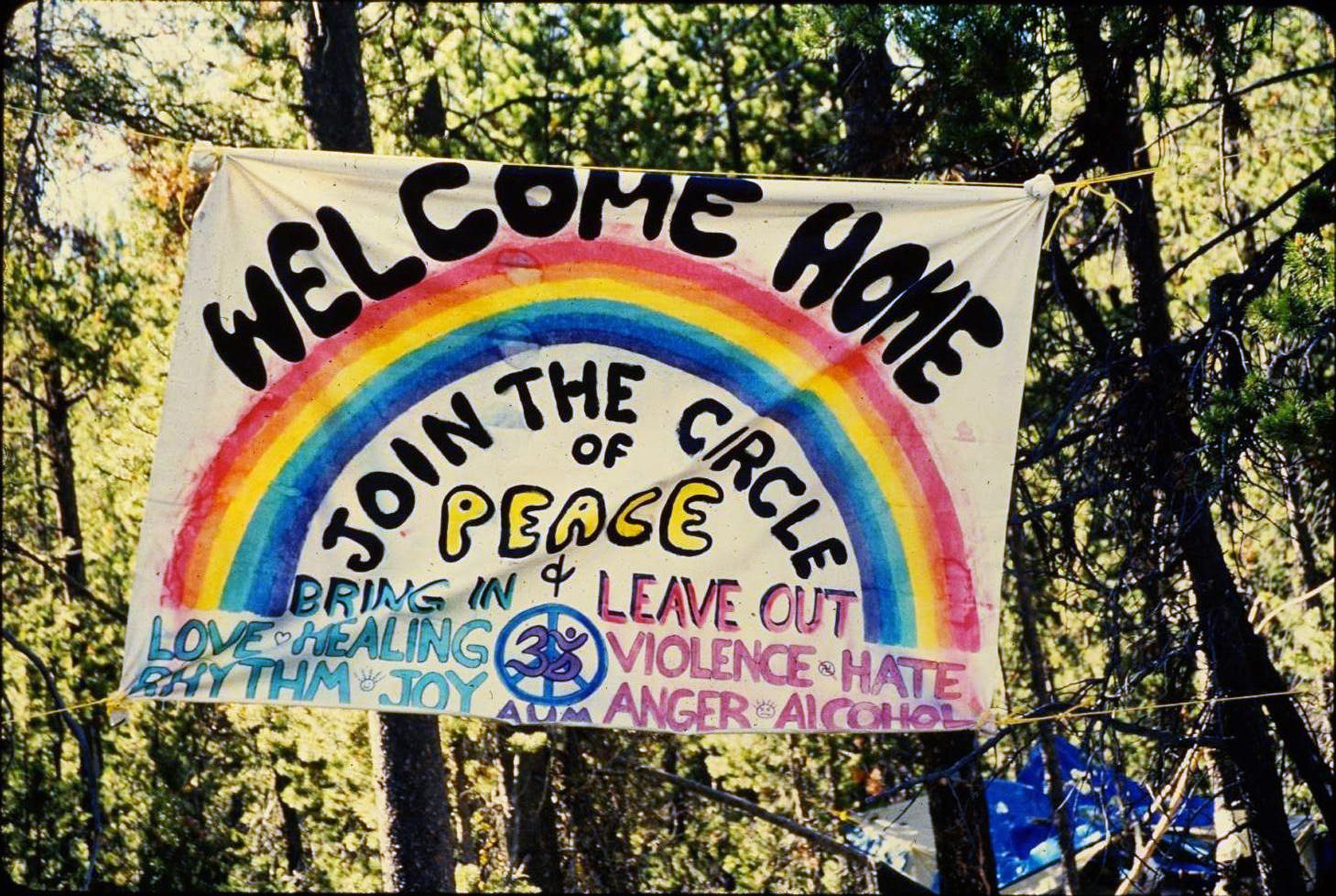
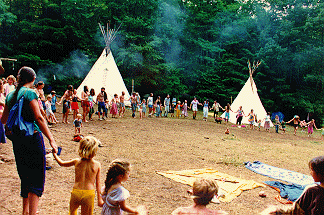
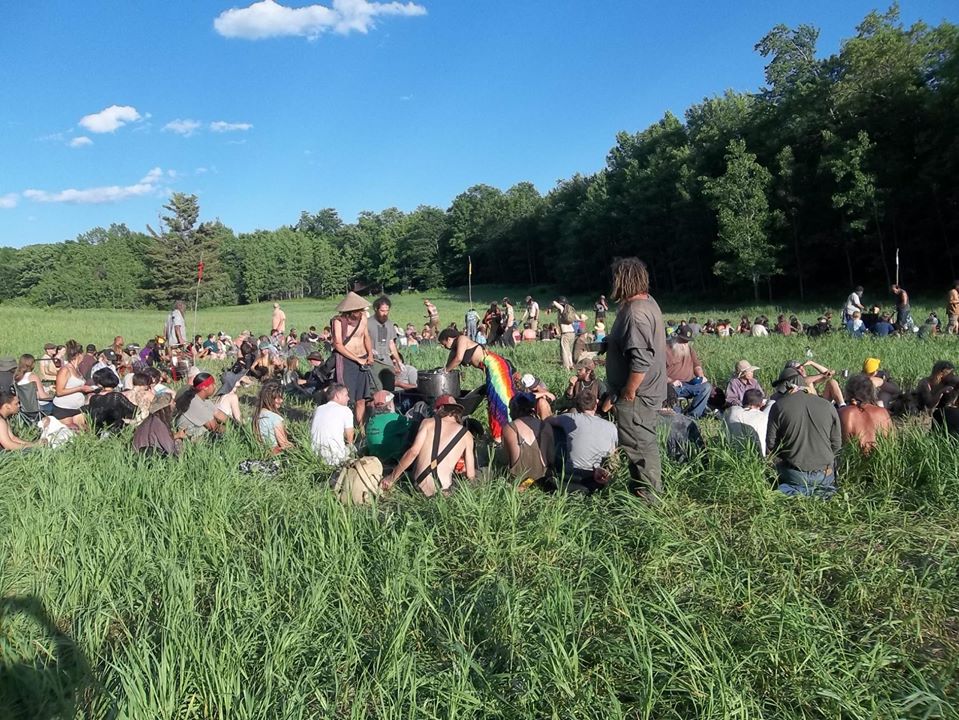

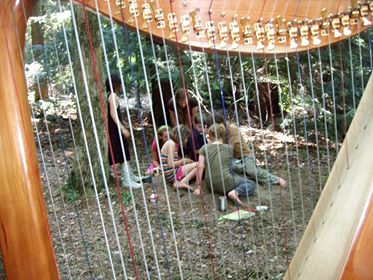


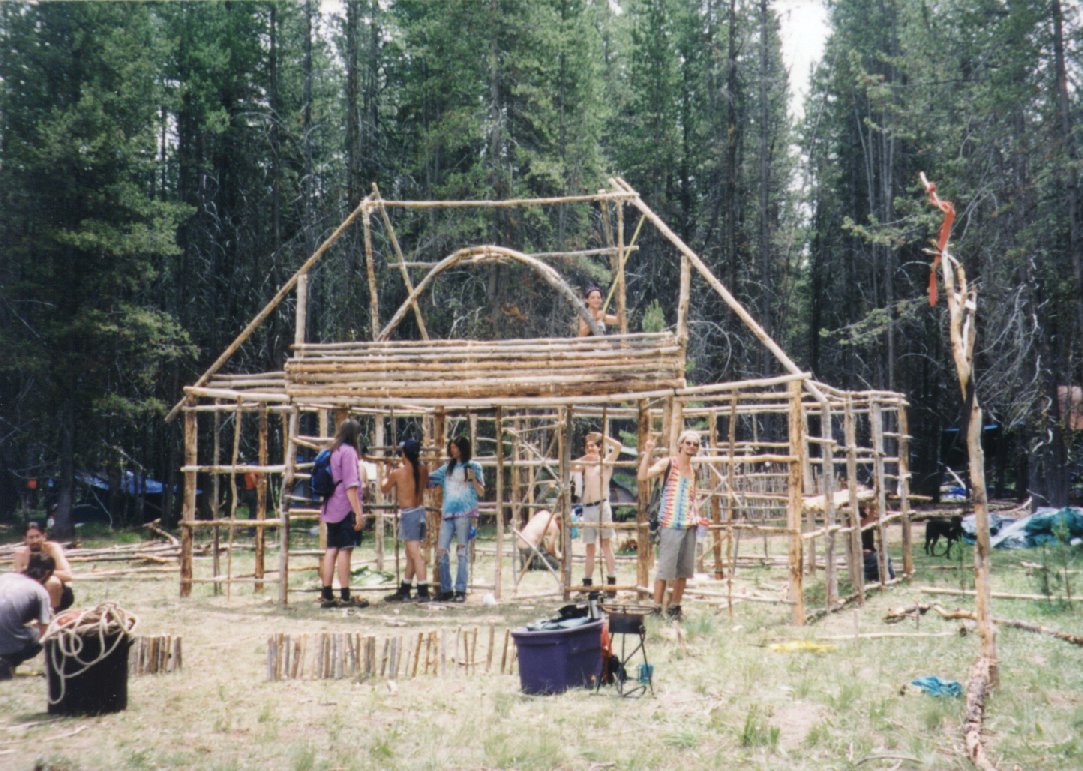

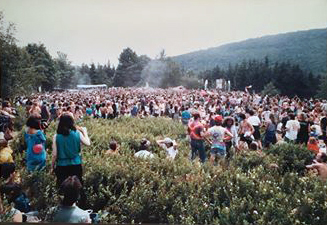
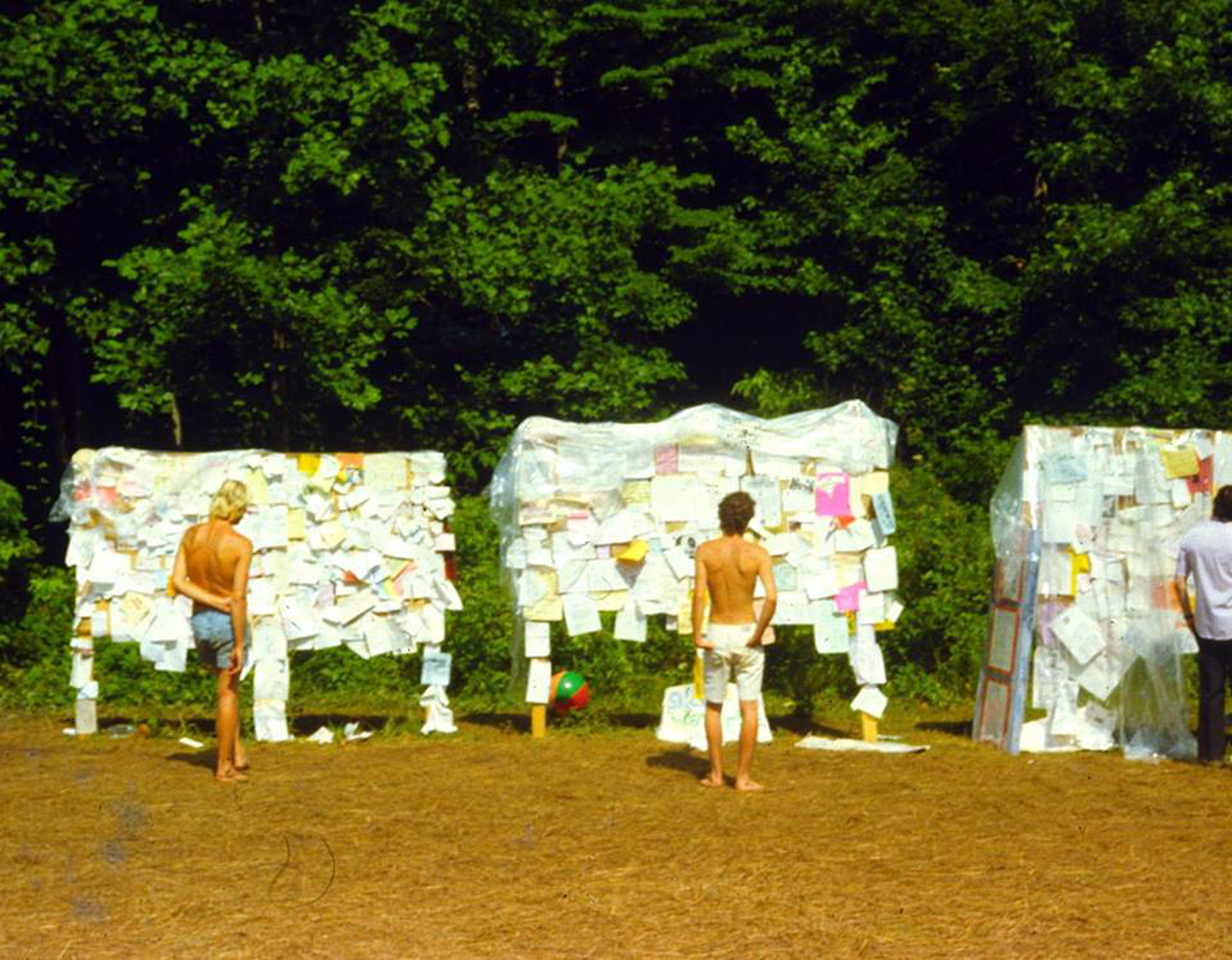
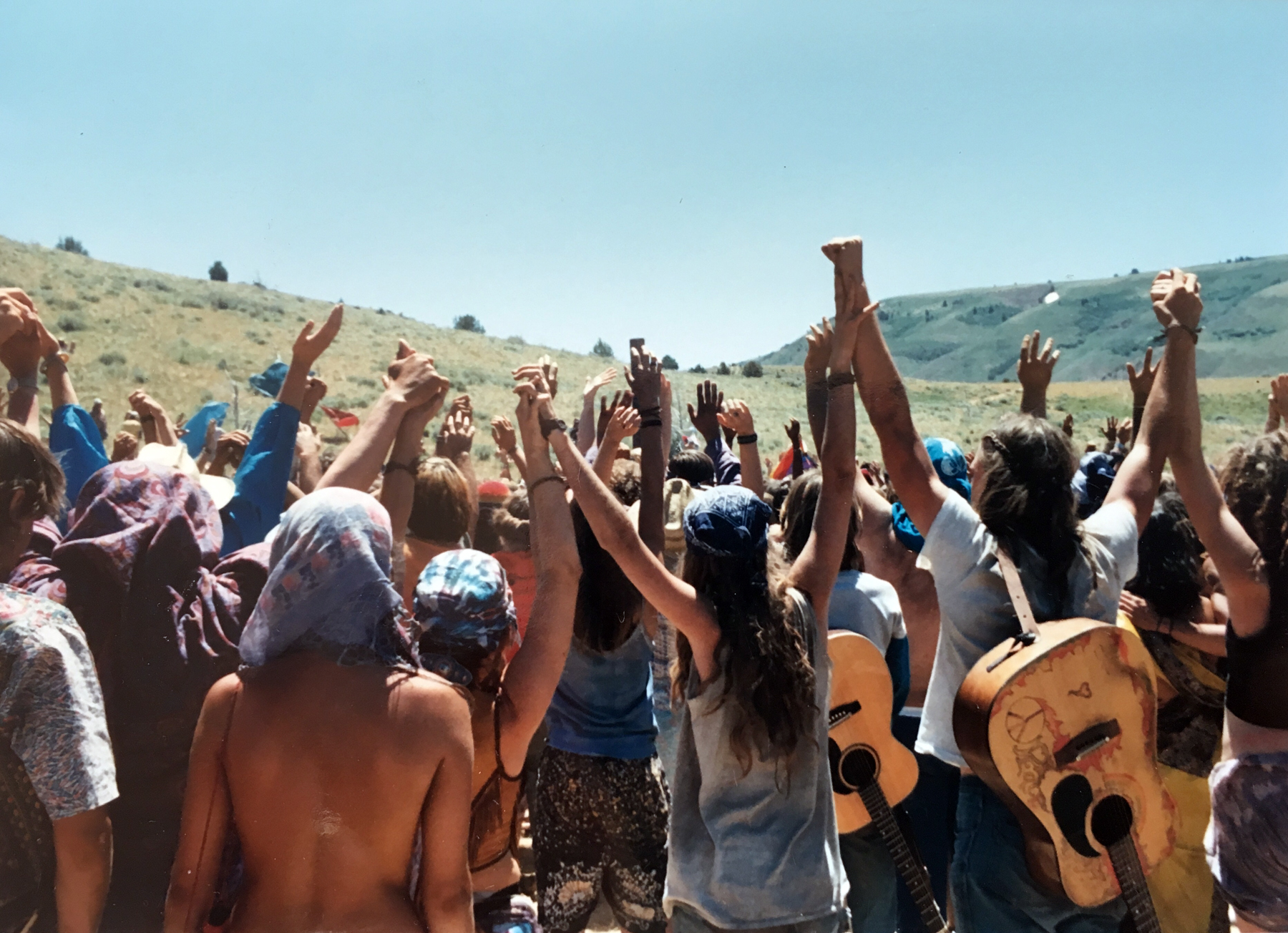
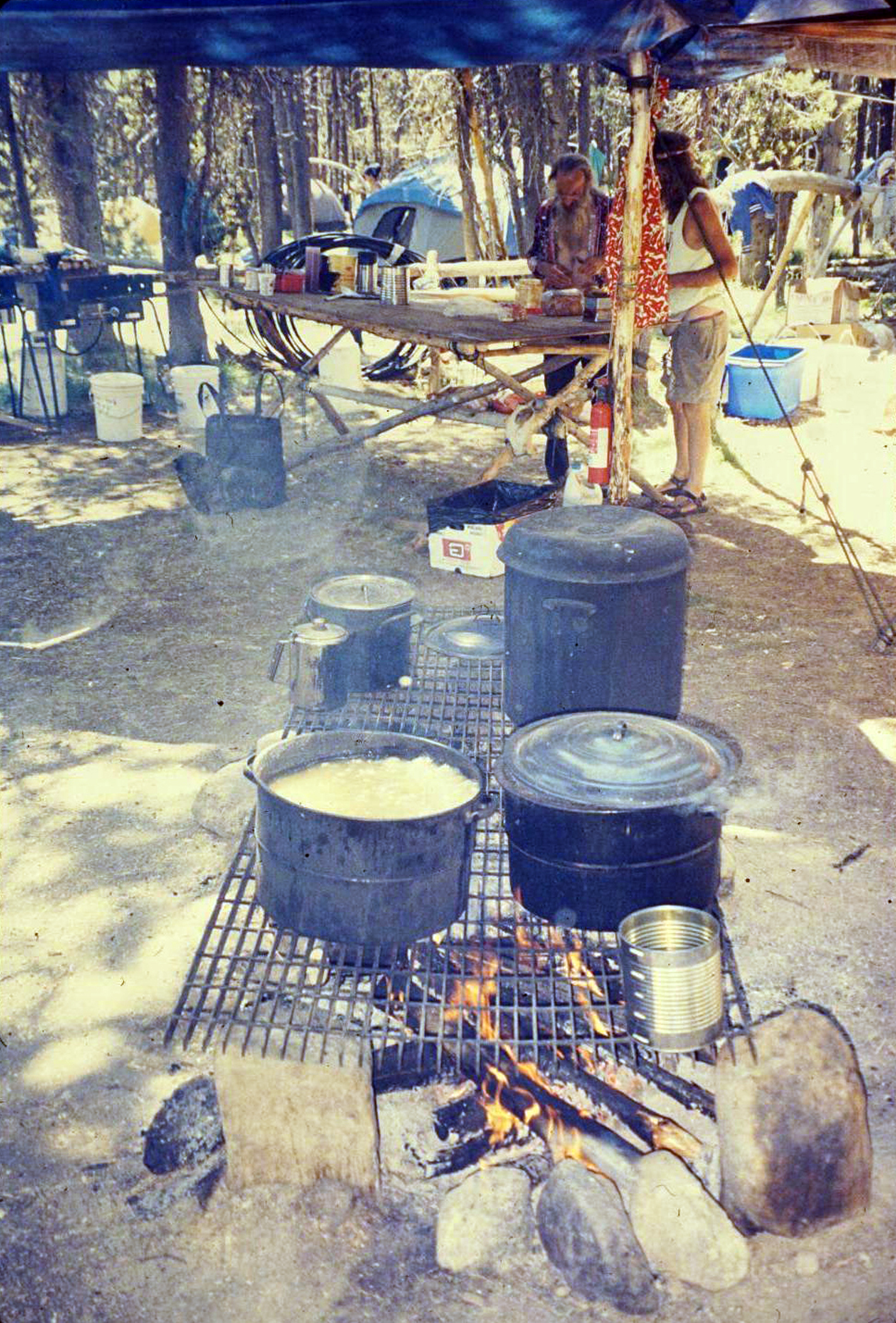
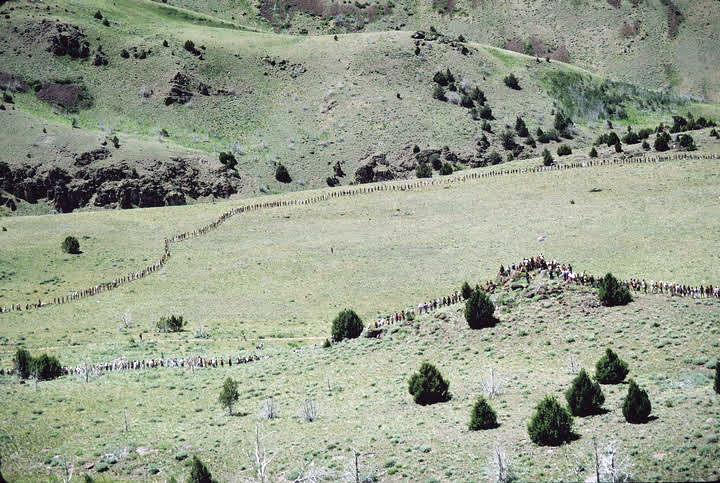
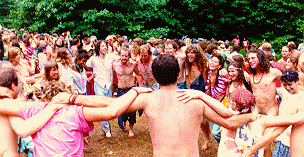
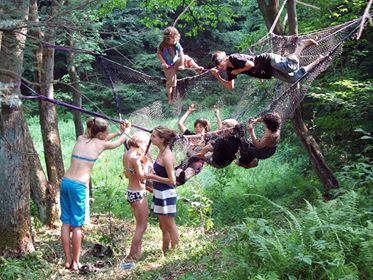
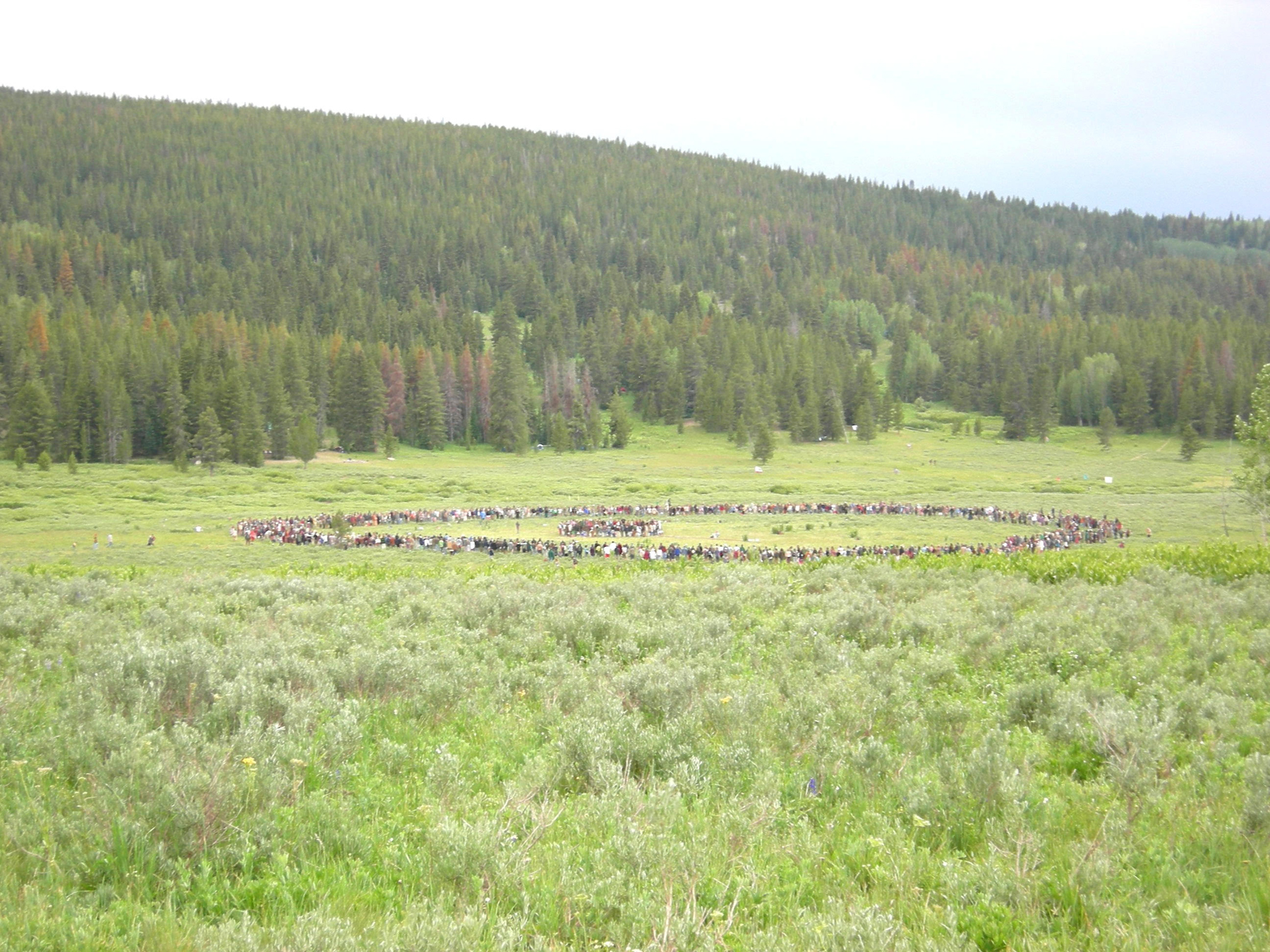

Very moving Wing!! Maybe this doddering elder will find herself there in this lifetime. Your essay is magical.
Again, your write-up and photos are inspirational, dear Wing!
Along the lines of Rainbow, Chris and I just returned from three days at the Oregon Country Fair. Recycling, Composting, Art, Music and Dance, Costumes, Global Foods, Juggling and Stilt-walking, Vaudeville, Yoga, and Diversity were obviously big themes. At (up to) 45,000 attendees per day, it was all wonderfully organized and carried on with the theme of Loving and Inspiring One Another. The OCF lasts three days each year, on a forested site (which they own) with a creek flowing through it. For most of the year, the site (near Eugene) is actually flooded. Life is good!